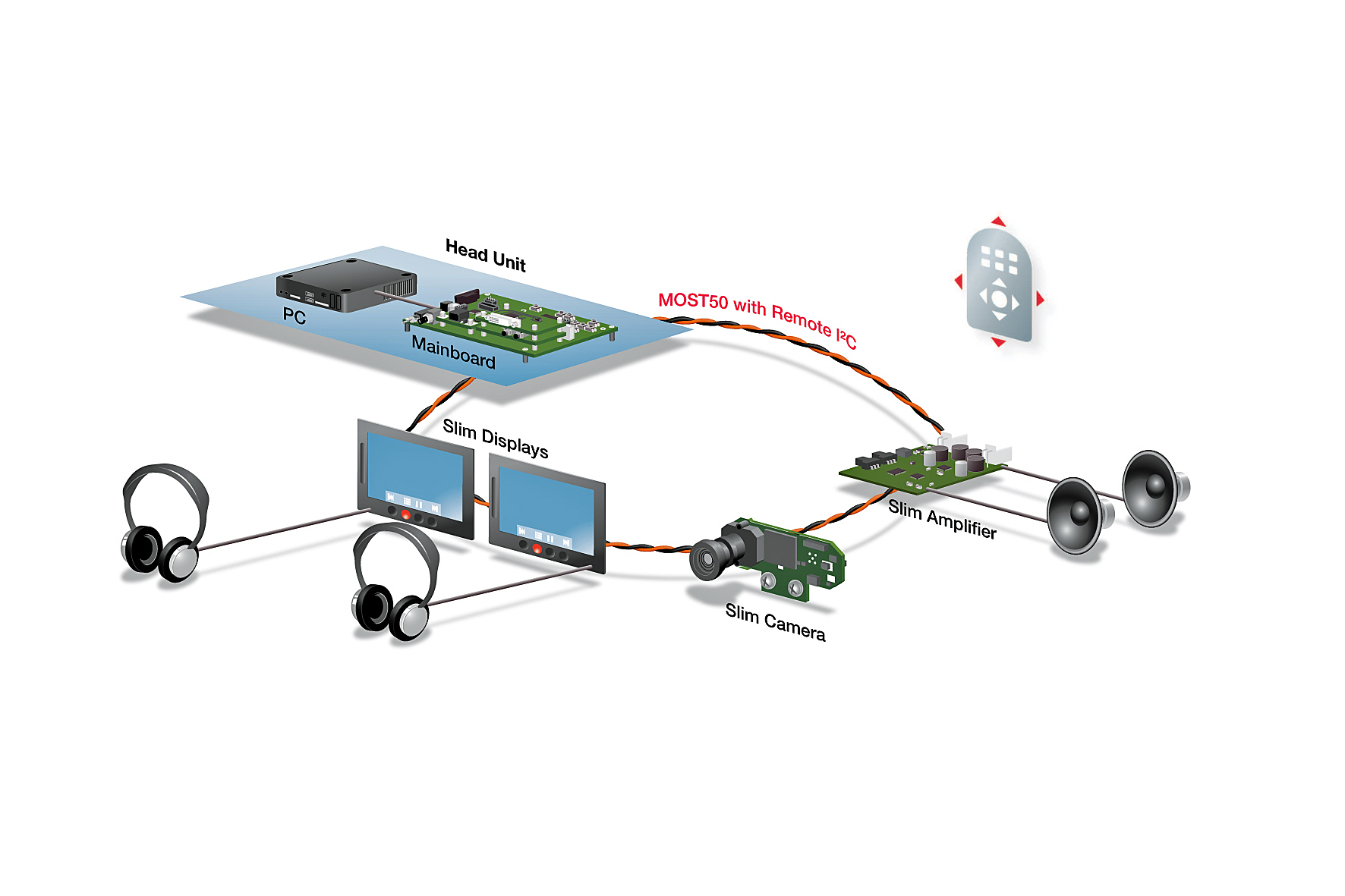Lean networks for HD multimedia
Deployment in over 150 models worldwide demonstrates how MOST has succeeded in high-end infotainment systems. Now the networking standard has started making inroads into middle and lower automobile sectors, targeting compact and sub-compact class cars. By Rainer Klos, Administrator, MOST Cooperation.
While once the reserve of well-equipped luxury cars, car manufacturers are now able to integrate more sophisticated infotainment systems at an ever-lower price range. MOST provides a simple and cost-competitive network for data rates up to 50Mbps, and Toyota has already successfully implemented the second generation of the standard in models of the both its Toyota and Lexus brands. General Motors has also equipped automobiles from the Buick, Cadillac, Chevrolet, and GMC brands, and most recently Opel with the Insignia.
In addition to optical fibre, MOST50 has for the first time enabled data transmission over the electrical Physical Layer, made of cost effective unshielded twisted copper wires (UTP, Unshielded Twisted Pair). Due to harsh environmental conditions in cars, particularly in view of the electromagnetic characteristics of the electrical transmission medium, appropriate adaptations were made when designing the second generation of MOST. Susceptibility to emitted radiation, and robustness against electromagnetic pulses - such as those induced by the electrical power train of hybrid/electric vehicle - have been optimised so that the technology is now perfectly suited for use in the demanding car environment, with measures spanning all levels of the ISO/OSI layered architecture. At the level of the physical transmission medium, for example, cost effective converters for decoupling have been inserted for wiring the network controller. Asian and US American manufactures decided on the use of MOST50, as with it they were able to retain existing wiring and assembly processes instead of changing to fibre optics.
Remote control of functions
This HD multimedia networking solution might be further simplified and cost-reduced with an implemented remote control function. This function allows a reduction of the number of microcontrollers required and the amount of memory needed in small and medium sized systems, by omitting them in peripheral devices like displays, cameras or amplifiers. Instead of a microcontroller in every node, they may be remotely controlled with a single, central microcontroller, for example in the head unit. The elimination of further microcontrollers and memory considerably reduces system costs.

Simple and cost effective MOST50 HD multimedia network across UTP for middle class and compact cars (Image Source: MOST Cooperation)
If the complete control function is based in the head unit, the development process also eases tremendously, as unique software only has to be developed for the head unit and not for peripherals. Amplifiers and displays run without their own microcontrollers and without local software, and this type of device architecture not only significantly reduces the cost for the remotely controlled devices, but supports optimisation in areas of system partitioning, space requirements on printed circuits or even power dissipation in the devices. Typical examples for peripheral systems are cameras and rear-seat entertainment devices as well as additional inputs and outputs, displays and more.
As an example, an amplifier - a typical implementation - the audio amplifier function block (FBlock) will become the head unit or is shifted to another node and renamed into an amplifier proxy node. This proxy thereby offers the same interface as the ‘normal’ audio amplifier FBlock and communicates across a tunnelled I²C connection with the remote control system, the audio amplifier image that implements the regular amplifier. The remote control device is independent of the position of the proxy in the network. Therefore, when changing partitioning, the impact on software is marginal and a high degree of freedom remains in the design.
On the remote control side, no microcontroller is needed. The only available FBlock is the one from the MOST network interface controller. This FBlock provides the functions to run I²C instructions in the remote control device. The FBlock is selected across the network from the Proxy. All local components, for example audio D/A converters, are reconstructed across this remote controlled I²C connection. With it a lean and cost competitive HD multimedia network solution is available that fulfils the mass market needs of volume models in middle and lower car segments.







